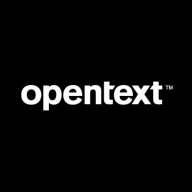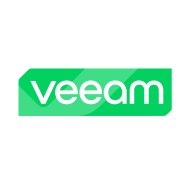

OpenText Data Protector and Veeam Data Platform are leading contenders in the data protection software industry. Based on feature strengths and customer feedback, Veeam Data Platform appears to hold the advantage due to its modern capabilities, seamless integration with virtual environments, and competitive pricing.
Features: OpenText Data Protector offers comprehensive integration with various systems such as SAP, Oracle, and SQL Server, emphasizing its automation with HPE hardware. It excels in data deduplication and disaster recovery operations. Veeam Data Platform stands out with seamless VM integration, SureBackup, and Instant Recovery, reflecting its focus on virtual environments and intuitive management.
Room for Improvement: OpenText Data Protector requires modernization of its user interface, lower costs, and better support for virtualization and cloud integration. Veeam Data Platform could enhance its integration with physical servers and specific applications like Oracle, alongside improved deduplication and pricing strategies.
Ease of Deployment and Customer Service: OpenText Data Protector's deployment is often complex, requiring skilled IT professionals, with customer service that can be sporadic in responsiveness. Veeam provides a more straightforward and flexible setup with commendable customer service and effective technical support, particularly suitable for large or evolving environments.
Pricing and ROI: OpenText Data Protector is characterized by its high pricing with complex licensing, making it less accessible for smaller enterprises. Its ROI is highly dependent on deployment and licensing strategies. Conversely, Veeam Data Platform offers competitive pricing, particularly through its flexible, predictable socket-based licensing, providing favorable ROI due to reduced backup times and efficient data management.
| Product | Market Share (%) |
|---|---|
| Veeam Data Platform | 7.6% |
| OpenText Data Protector | 0.9% |
| Other | 91.5% |

| Company Size | Count |
|---|---|
| Small Business | 28 |
| Midsize Enterprise | 22 |
| Large Enterprise | 61 |
| Company Size | Count |
|---|---|
| Small Business | 217 |
| Midsize Enterprise | 99 |
| Large Enterprise | 139 |
Veeam Data Platform is a leader in data resilience, providing businesses with reliable and secure backup, recovery, and advanced data insights. It is designed to combat today's cyber threats while ensuring data remains protected, adaptable, and recoverable.
Engineered to offer a seamless and powerful data resilience experience, Veeam Data Platform helps organizations with intelligent protection beyond just backup. It enables orchestrated and verifiable recovery processes, helping maintain continuous operations. By offering integrated solutions against evolving cyber threats, this platform assures businesses of data availability and precision restoration, empowering them to remain resilient under any circumstances. Its robust security features, coupled with efficient replication and deduplication benefits, deliver confidence in data management across hybrid and cloud deployments.
What features make Veeam Data Platform stand out?Veeam Data Platform is primarily used for managing backup and replication across VMware and Hyper-V environments, supporting both cloud and on-premises infrastructures. In industries managing significant IT services, it assists in disaster recovery and virtual machine protection, enhancing business continuity. Its integration with applications like Microsoft Office 365 ensures reliable data protection and quick recovery, making it beneficial for those looking to streamline operations across diverse deployment scenarios.
We monitor all Backup and Recovery reviews to prevent fraudulent reviews and keep review quality high. We do not post reviews by company employees or direct competitors. We validate each review for authenticity via cross-reference with LinkedIn, and personal follow-up with the reviewer when necessary.